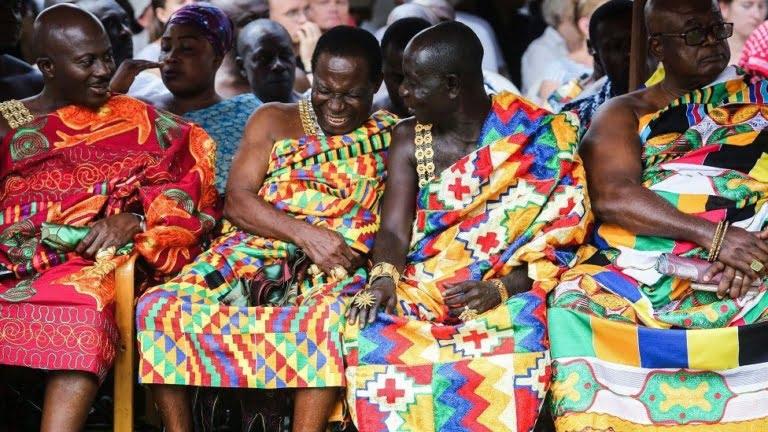table.wp-table {
width: 100%;
margin: 0 auto;
text-align: center;
border-collapse: collapse;
}
table.wp-table th,
table.wp-table td {
border: 1px solid #ccc;
padding: 5px;
}
table.wp-table tr:nth-child(even) {
background-color: #f2f2f2;
}
h1 {
text-align: center;
font-size: 3rem;
margin-bottom: 1rem;
}
h2 {
font-size: 2rem;
margin-bottom: 1rem;
}
h3 {
font-size: 1.5rem;
margin-bottom: 1rem;
}
ul {
list-style-type: disc;
padding-left: 1rem;
margin-bottom: 1rem;
}
li {
margin-bottom: 0.5rem;
}
p {
margin-bottom: 1rem;
}
table {
border-collapse: collapse;
}
th,
td {
padding: 0.5rem;
border: 1px solid black;
}
Unveiling the Vibrant Tapestry of Kente: A Cultural Legacy Unraveled
Table of Contents
Introduction
Kente cloth, a splendid textile renowned for it’s intricate patterns and vibrant colors, is a symbol of Ghana’s rich cultural heritage. This exceptional fabric has garnered global acclaim for its artistic beauty and historical importance, becoming an emblem of African pride and creativity. In this article, we embark on a captivating journey to unravel the vibrant tapestry of Kente, exploring its historical roots, intricate weaving techniques, diverse patterns, and the cultural significance it holds.
Historical Origins
The art of Kente weaving originated in the Ashanti Kingdom of Ghana during the 17th century. It was initially reserved for royalty and worn by kings, queens, and other high-ranking members of society. Historically, Kente cloth served as a form of visual communication, with specific patterns representing different clans, tribes, and occasions. The vibrant colors and elaborate designs conveyed messages of power, prestige, wealth, and cultural identity.
Weaving Techniques
Kente cloth is meticulously handwoven on a horizontal loom using a technique known as “strip weaving.” Skilled artisans create individual strips of fabric, which are then sewn together to form a larger piece. The intricate patterns are created by interweaving colorful yarns, often made from cotton or silk. The vibrant hues of Kente cloth are achieved using natural dyes derived from plants, minerals, and insects.
Diverse Patterns
The variety of patterns found in Kente cloth is amazing, with each design carrying a unique meaning. Some of the most iconic patterns include:
- Adinkra: These are symbolic motifs that represent proverbs, concepts, and values.
- Fontomfrom: this pattern symbolizes the strength and resilience of the Ashanti people.
- Aya: Meaning “fern,” this pattern represents peace and harmony.
- Sankofa: This pattern features a bird looking backward, symbolizing the importance of learning from the past.
cultural Significance
Kente cloth holds immense cultural significance for the people of Ghana and beyond.It is indeed traditionally worn during special occasions such as festivals, weddings, and funerals, representing a deep connection to ancestral heritage and cultural identity. In contemporary times, Kente has transcended its ceremonial roots, becoming a global fashion icon and a symbol of African pride.
Benefits and Practical Tips
- Preserves and celebrates cultural heritage
- Supports customary artisans and promotes economic empowerment
- Adds a vibrant touch to décor and fashion
- Tip: Look for authentic Kente cloth made in Ghana to ensure quality and authenticity
Case Studies
- Ghana Fashion Week: Kente cloth takes center stage at this annual event, showcasing the creativity and innovation of contemporary Ghanaian designers.
- Kente Festival: This party in Kumasi, Ghana, honors the history and artistry of Kente weaving, attracting visitors from around the world.
First-Hand Experience
“Donning a Kente garment is a transformative experience.The vibrant colors and intricate patterns evoke a deep sense of cultural pride and connection to my African roots,” says Ama, a Kente enthusiast from Ghana.
Conclusion
Kente cloth is a testament to the artistry, ingenuity, and resilience of the Ashanti people. Its intricate patterns and vibrant colors represent a rich cultural tapestry that has endured centuries. From its historical origins to its contemporary usage, Kente remains a symbol of African heritage and identity, inspiring awe and appreciation worldwide.

